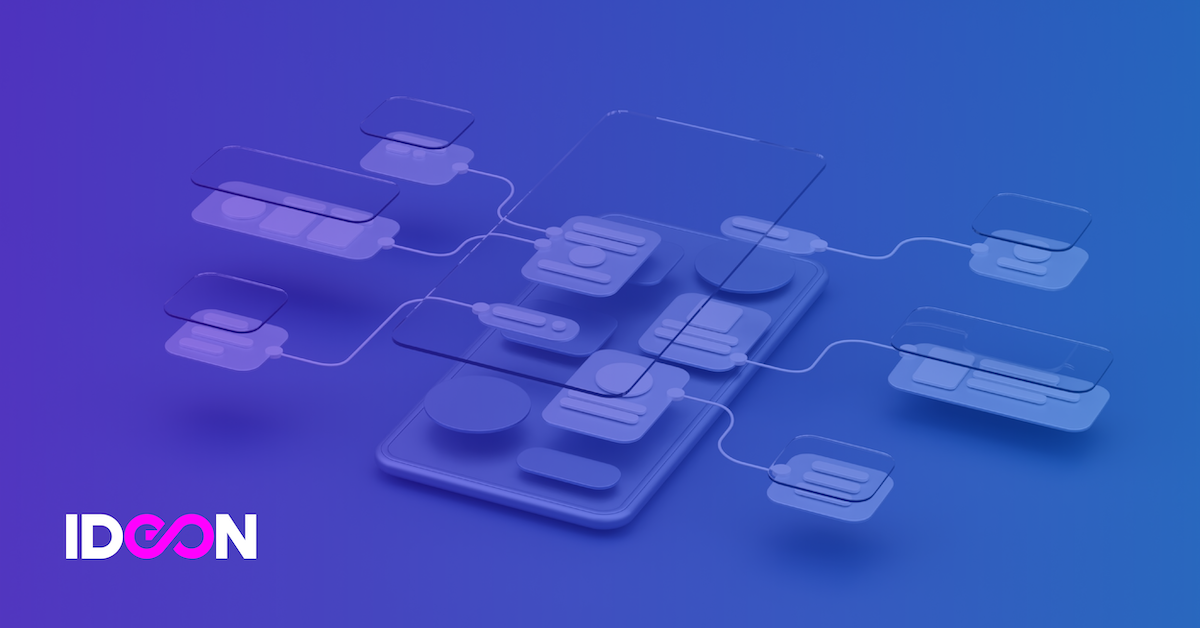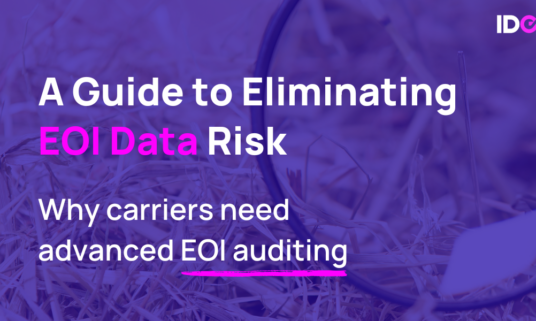Ideon Blog
November 08, 2022
By: Ideon
Decision Support Tools Are Modernizing the Employee Benefits Experience

Here’s how leading carriers and third-party platforms guide employees through their benefits journey with decision support technology.
It was inevitable.
The application of data, predictive analytics, and an intuitive user experience to legacy plan selection, enrollment, and year-round engagement processes is a benefits industry game-changer whose time has come.
From choosing the right benefits package to finding high-quality, cost-effective healthcare, today’s employees expect technology to help them make better benefits decisions. Combining data with advanced digital experiences, modern carriers and a new generation of technology platforms are doing precisely that.
To better understand the challenges and opportunities posed by decision support technology, John Emge, Senior Vice President, Carrier Sales at Ideon, recently moderated a webinar featuring three industry experts who are immersed in improving the employee experience through decision support tools: Dan Murdoch, CMO at Nayya; Jill Schlofer, 2nd VP, Implementation and Enrollment at The Standard; and Travis Symoniak, Senior Product Manager, Group Benefits Enrollment at Securian Financial.
In a briskly paced and engaging webinar, the four discussed:
- The evolution from simple decision trees to advanced, data-driven experiences
- The data powering decision support platforms
- What’s driving increased employee demand for benefits decision tools
- Lessons learned developing and deploying decision support tech
- The future of decision support
Below we share five of the most actionable insights from the session.
You can watch the full webinar here.
1. Decision support must be an experience
Decision support should encompass an entire ecosystem that engages, educates, and provides recommendations before, during, and after the enrollment process, said Symoniak.
Decision support platforms today can leverage customer-disclosed data to make recommendations that are hyper-personalized, offering employees a strong and empowered understanding of what types of benefits they should pick and — just as important — why. “Whether I’m trying to plan for a voluntary surgery, or my kid’s braces, there is this accumulation of unique circumstances that we all experience,” Murdoch explained. “Benefits need to fit our unique mental, physical, and financial situations.”
To attain that level of personalization, employees must have a level of trust around sharing their data, and employers must follow all privacy and security best practices. But the upside is considerable. “The more you give, the more you get,” said Murdoch. “
It’s also important, Schlofer said, to circle back and help the employer understand whether they made the right choices of benefits for their employees.
2. Decision support gives employees confidence they’re making smart, informed choices
Benefits are the single most important financial decision we make each year, explained Murdoch. They are an essential tool for risk mitigation and planning for the seen and unforeseen. It’s critical that employers offer decision support that empowers employees.
The concept of demonstrating benefits and claims scenarios to employees is extremely powerful, Symoniak said: “We have invested in allowing employees to customize different claim scenarios and put themselves in others’ shoes. When you have a fall, or you hit your head playing softball, what does that claim process look like? What is the payment going to look like, what are you actually going to use those insurance products for?” Employees come away feeling confident they’re making smart, informed choices.
3. Decision support must extend beyond enrollment
Symoniak said the next step in the evolution of decision support is to extend it past periods of enrollment and qualifying events. The future is year-round engagement, as employees are shopping for medical care, getting a recommendation, and getting additional support.
Decision support should become the “go-to” for employees, employers, and brokers when employees experience important changes in their lives, notes Schlofer.
Murdoch noted that consistently evaluating the employee benefits experience is essential to building a best-in-class offering: How are you evaluating your strategy? How are you reviewing employee feedback? The composition of your workforce? How are you choosing your carrier and reviewing their plans to build a holistic offering?
4. Recent market changes are driving demand for decision support
“Two or three years ago there was not this level of interest in decision support,” noted Symoniak.
Indeed, the current labor crisis and rising inflation are major factors in the growing demand for decision support.
Employers are trying to figure out how to attract and retain the best employees, Schlofer explained. How can you use benefits to your advantage? In the recruitment process, help an employee understand what benefits choices they might have if they were to come on board.
Murdoch agreed: “It is absolutely to your competitive advantage to bring benefits decision support to recruitment and hiring. Hiring managers can tell candidates that the company has put together a best-in-class offering, and you don’t have to memorize all the options — we have a platform that helps inform your choices.”
Schlofer explained that inflation is also a factor: Employees should spend more time making these decisions, which can have a critical impact on their personal finances. Now is not the time to drop your benefits because you believe you can’t afford them.
Murdoch noted the economic advantage of decision support to employers. “This is definitely not the time to cut the number of benefits and the amount that’s being spent. But there is an opportunity to spend more intelligently across the entire spectrum of your workforce. Using decision support to identify the right plans for the right people for the right reasons can be economically advantageous to the employer.”
5. The future: A holistic approach to benefits
The industry will continue to move past the legacy driven, challenging dynamic of the traditional benefits selection process. Predicted Murdoch: “I see the future of decision support hitting all the major categories that are required to inform the best recommendations, taking into account lifestyle, habits, and health history. Employers will see ROI on such a holistic approach.” Further, he explained that a best-in-class benefits experience will increasingly feel familiar and intuitive, a step-by-step experience that feels to the user like, for instance, Amazon or TurboTax.
Symoniak said in order to achieve a holistic, year-round approach to decision support, it will be crucial to continue breaking down barriers to linking data to carriers. “We are going to need more real-time integration across the industry to support benefits decisions. Carriers need to partner with benefits administrators and third-party administrators to get additional information. It’s the topic of the time,” Symoniak said. “Yes to more APIs!”
For more insights into how decision support tools can elevate the employee benefits experience, watch the full webinar here.


